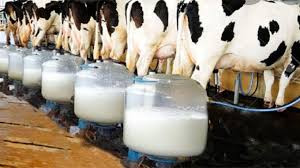
THE Zimbabwe Association of Dairy Farmers (ZADF) has revealed that milk production increased by 12% in the first quarter of 2024 despite the effects of the prevailing El-Niño-induced drought.
Speaking during a Township Economies and Rural Entrepreneurship forum organised by the DEAT Capital in Bulawayo on Tuesday, ZADF chief executive officer Paidamoyo Chadoka said milk production has generally been on an upward trend since 2022.
“In terms of our milk production for 2023, we produced 100 million litres as a country, which was a 9% increase from the previous year. Currently, for the first quarter we have seen an increase of about 10% to 12% in milk production,” Chadoka said.
“However, the effects of the El Niño-induced drought are being felt in dairy farms. However, as dairy farmers we are also trying to implement drought mitigating initiatives in order to save the dairy herd so as to sustain milk production.”
She added that through private partnerships they have managed to come up with facilities to improve cattle head numbers.
“In view of promoting production in Zimbabwe, breeding and increasing the herd size is important for us to be able to achieve the milk volumes that we require.
"As ZADF we have a facility that is available for dairy farmers, even beef farmers that may be interested in dairy genetics, we have convectional semen straws to improve our dairy genetics on beef and dairy animals with the aim of having higher milk-yielding cows in the future,” Chadoka added.
- Milk production in 12% jump, despite drought
- Dairy industry under threat
- Dairy farmers project growth in milk production
- Lifeline for Chipinge smallholder farmers









